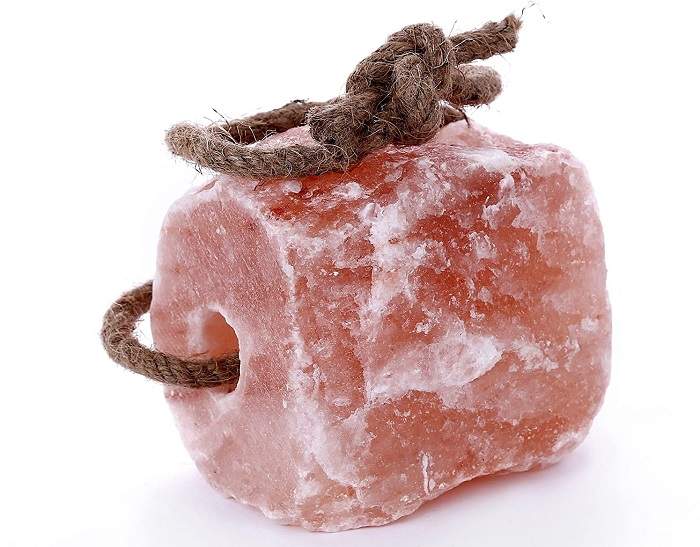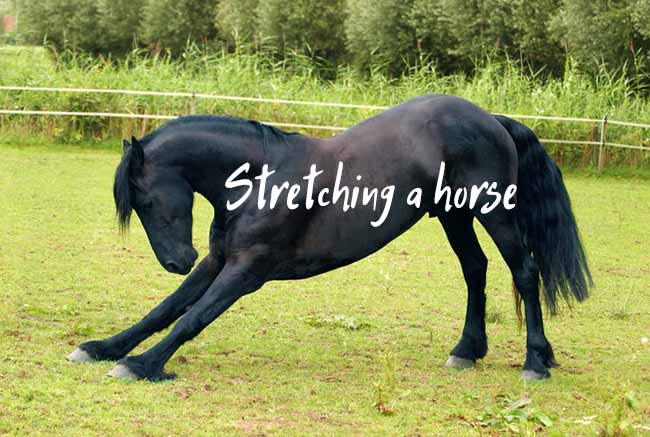Does Your Horse Need a Salt Block or a Mineral Block?

When talking about horse nutrition and salt blocks, it can be difficult to figure out exactly what your horse needs. Sometimes we tend to go overboard, buying and feeding things to our horses that they could very well go without. In the case of salt blocks, some horse owners have questioned if they are really necessary. So here’s my answer:
Not every horse needs a salt block, but all horses need salt in their diet. If you think that your horse is not getting enough salt in its daily meals, you can use a salt block as a supplement. As always, consult with your vet or a horse nutritionist before making a decision.
The practice of feeding salt to horses.
When did all of this start, and when did we figure out that domesticated horses need salt in order to lead healthy lives? Apparently, it was cattle farmers that first figured this out, and horse owners have quickly adopted it as well. As veterinary medicine became more advanced, we soon realized exactly how much salt a horse needs in its diet and how to supplement it.
Moreover, certain salt blocks all include a few useful minerals that are essential for a horse’s health. But are they really worth it when compared to a plain white salt block? Let me shed some light on the matter.
The different types of salt blocks.
There are three main types of salt blocks for horses that I know of:
- Plain white salt blocks. These blocks contain sodium chloride and nothing else. These are ideal if you’re just starting out and you don’t want to feed your horse any extra minerals. The equine will get its daily salt requirements from it, and that’s that. Alternatively, you could also feed your horse iodized table salt, but there’s a catch. In this case, you’ll need to keep track of your horse’s iodine intake. Iodine is sometimes added to mixed feeds, especially in kelp-based supplements. If ingested in high amounts, iodine can affect the horse’s thyroid gland.
- Red mineralized salt blocks. These blocks contain trace minerals such as manganese, cobalt, iodine, iron, copper, and zinc apart from good old salt itself. While useful, keep in mind that nearly all grain rations and forages contain trace minerals, so your horse will likely get its fair share of minerals from its regular food. Furthermore, mineralized salt blocks are still 92% sodium chloride, which means that your horse will not ingest enough of the block every day to meet its mineral intake requirements. There is a specific case in which mineralized salt blocks could be worth it when compared to regular salt blocks, and that’s if the horse likes their taste better.
- Rock salt or Himalayan salt. Rock salt should also be taken into consideration. Also known as Himalayan salt, it’s usually mined in some areas of Colorado and Utah. Since it’s not heavily processed like table salt, rock salt is valued for its purity. Most of its natural minerals are left untouched, and this makes this type of salt healthier for the horse. Moreover, many horses prefer the taste of Himalayan salt when compared to other salt blocks. Rock salt comes in blocks, or it is available on a rope.
Different ways of supplementing a horse’s salt intake.

Depending on how you feed your horse or how it prefers to take its salt intake, there are different ways of going about supplementing it. You could always just add salt freely into the horse feed, or you can just add it into a bucket and leave it around for your horse to find it.
Of course, you can also place a salt block on the pasture or in the stall, which has the benefit of allowing the horse to get its salt intake as it sees fit. The problem with this method is that your horse might not be licking that block enough throughout the day, which means that you will need to actively monitor its salt intake. If you add salt yourself into the feed, you can control exactly how much of it ends up in your horse’s system.
A salt block should last for about two months if placed in the barn or pasture. Of course, this depends if more than one horse enjoys access to it throughout the day.
Why do horses need sodium?
As one of the main electrolytes found in a horse’s body, sodium plays a very important part of its overall health. Sodium levels influence how much your horse drinks. Since sodium is lost by perspiration, low levels of it will cause a horse will avoid drinking water in order to avoid flushing it out. This can lead to dehydration.
On the other hand, if sodium levels in a horse’s body are adequate, the equine will drink plenty of water and will completely avoid dehydration. Working in tandem with chloride, sodium manages various muscle and nerve functions in horses. If your horse doesn’t get enough salt in its meals, it might start to behave strangely. For instance, it might eat dirt in an attempt to get some extra nutrients.
Other benefits of salt blocks.
Apart from supplementing your horse’s sodium chloride intake, salt blocks can also offer a few extra benefits.
- Encouraging water consumption. When we eat salty foods, we get thirsty, and the same applies to our four-legged friends. If you want your horse to drink more water, a salt block could help you in this regard. In order to prevent dehydration, make sure that your horse has access to ample amounts of water every day.
- Replacing minerals lost through perspiration. Horses sweat quite a bit, especially when we put them to work. As they sweat, they lose precious minerals, which can be recovered with the help of salt blocks. As I mentioned before, a mineral block will not contain enough minerals to ensure a horse’s daily intake, but it can help with recovering what was lost after a workout.
- Regulating the Thyroid. Iodine in salt can help regulate a horse’s thyroid gland. Too much of it can disturb it, so maintaining a proper balance is key.
Potential problems caused by salt blocks.
When multiple horses share a single block, one of them might become dominant and push the others aside. This means that not every horse in the herd will be able to ingest equal amounts of salt. You’ll need to keep an eye out for this and add more salt blocks as needed. Fortunately, they’re not very expensive or hard to replace.
Another potential issue is caused by the block’s coarse surface. Like I mentioned before, salt blocks were originally intended for cattle. Cattle have rougher tongues and are able to cope with the block’s abrasion. By comparison, a horse’s tongue might suffer some damage if the equine licks the block repeatedly and insistently. Out of frustration, a horse might try to bite the block in order to get more salt out of it. It could end up damaging its teeth in the process.
In the cold season, salt blocks might become too cold for comfort, and horses might avoid going near them altogether. Furthermore, you’ll need to keep salt blocks clean at all times, particularly if you place them outside.
Salt block alternatives.
if you don’t want to use a salt block for whatever reason, or if your horse just won’t go near them, there are some alternatives available. Before choosing one, make sure to consult with a professional, and maybe get some tests done on your horse as well.
The most popular choice comes in the form of electrolyte supplements, which usually ensure that your horse’s needs are met. These might be more expensive when compared to a simple salt block, and they will definitely need to be administered properly.
Conclusion.
Horses need salt in their diet, that much is certain. How you wish to go about supplementing it is completely up to you. I would try out different types of salt blocks in order to see what my horse prefers. Afterward, I would place it in different places on my property, again in order to see how my horse behaves. If you want to learn more about horse diets, what they can and cannot eat, go ahead and have a look at this guide that I put together not too long ago.
If you have any experience with salt blocks that you would like to share, or if you know of any other types that I failed to mention, don’t hesitate to get in touch!






